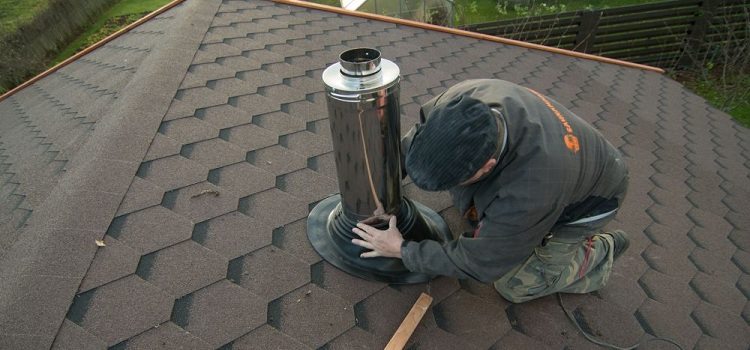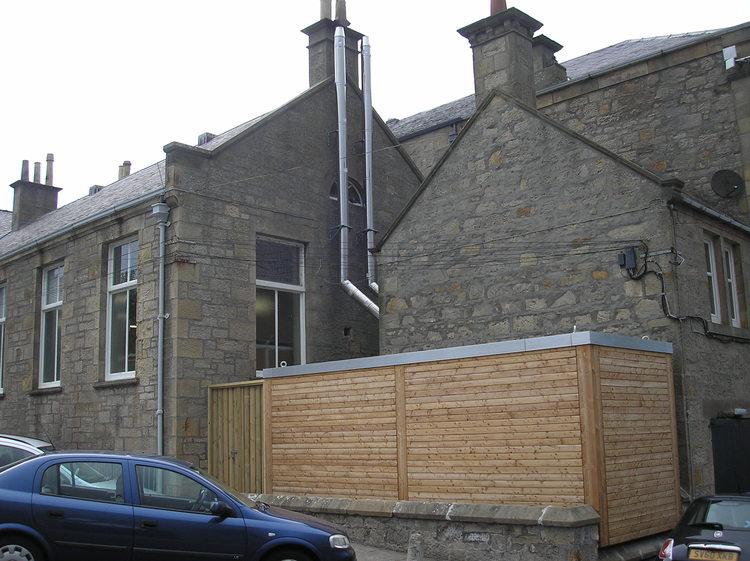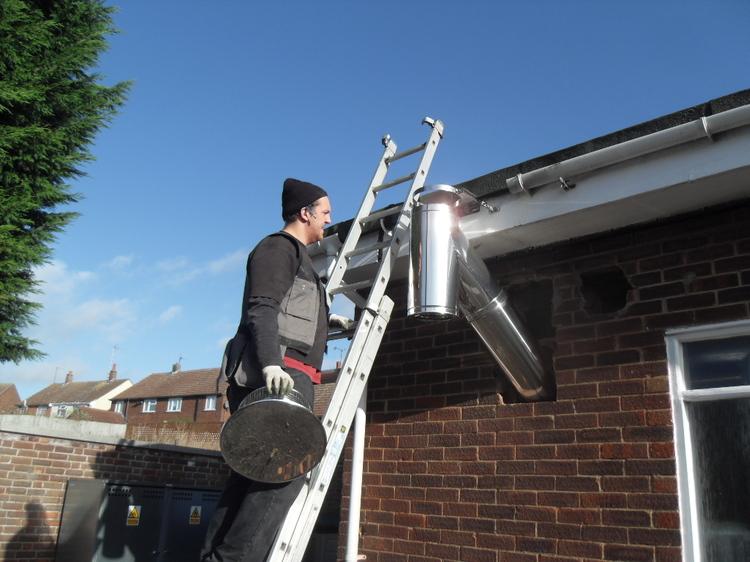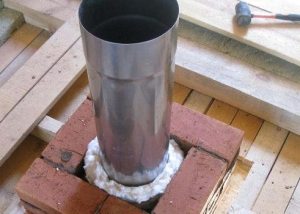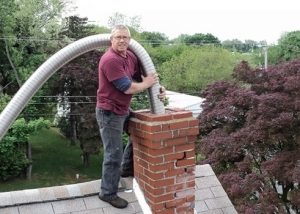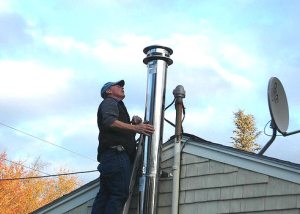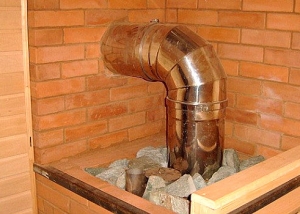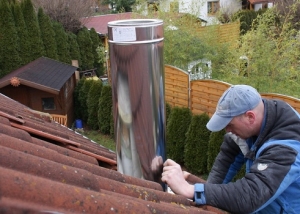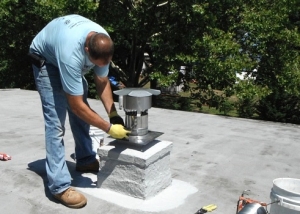Chimneys are among the important elements of boiler plants, regardless of what type of fuel they work on - solid, gaseous or liquid. We all know that the combustion process is accompanied by the formation of chemically active gaseous and solid substances - nitrogen oxides, carbon dioxide, ash, soot and others. Chimneys boiler rooms should provide good dispersion of all the resulting toxic combustion products.
Content
Types and differences
In boiler rooms you can find single-barreled or multi-barreled chimney. Currently, the installation and operation of such a design is based on products of the following types:
- self-contained independent chimney designs - shells made of high-carbon steel. Their fastening is carried out by pouring the anchor basket into the foundation;
- farm. Mounted on a solid and reliable self-supporting truss, the fixation of which is carried out similarly to the above option;
- front and near-facade constructions. Mounted on a frame. Mounting is done to the wall with wall brackets. The lower foundation of the façade structure receives a weight load;
- mast construction of the chimney. Fixation is carried out on an anchor basket, which is poured into the foundation. The flue is attached to the column using clamps;
- frameless self-supporting pipe providing draft in the chimney. It is fixed indoors, installed on the roof.
General norms
According to the Sanitary Rules and Norms, the height of the chimney boiler pipes is in direct proportion to the amount of fuel consumed per hour, its ash content and the concentration of sulfur in it.
The main elements of such structures include the barrel itself, the base and the foundation. In most cases, the trunk inside is protected by a lining, for the construction of which a refractory brick is used. The main requirement for the height of the chimney pipes is formulated as follows: it should be at least 5 meters higher than the ridge of the roof of houses located from a chimney structure within a radius of 25 meters.
The sizes of industrial structures - the diameter of the outlet, as well as the height, are standardized:
- boiler chimneys made of sheet steel with a thickness of 3 ... 15 millimeters can have a diameter of 0.4 ... 1 meter and a height of not more than 30 ... 40 meters;
- reinforced concrete structures of large enterprises of modern industry can have a diameter of up to 10 meters and a height of up to 300 meters;
- brick chimney boiler rooms have a diameter of 0.6 ... 8 meters and a height of 30 ... 70 meters.
Important! The sanitary standards separately stipulate the requirement for steel products: it is allowed to build them with a height of less than 30 meters only if the daily consumption of multi-ash fuel does not exceed 5 tons. This is due to the fact that the service life of structures of this type is 10 years, and the use of high sulfur fuel greatly reduces the value of this indicator.
Structural design: rules and approaches
The basis of all design work is the functional requirements for boiler chimneys:
- operating modes must comply with environmental standards;
- ensuring good passability of gases and emissions with their subsequent dispersion in the atmosphere;
- creating natural traction.
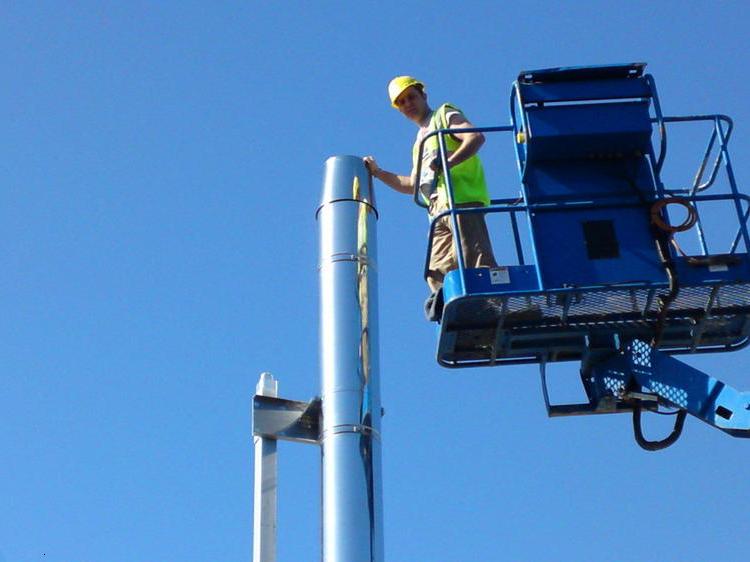
Installation of chimney systems is carried out in accordance with a project developed in accordance with the rules
The correct choice of the type of pipe, the calculation of its diameter, height, and aerodynamics fundamentally affects the fulfillment of the above requirements. A competent design process involves calculations to determine the stability, strength of all components of the structure, taking into account both the foundation and the fastening mechanisms.
The sequence of stages of designing chimney boiler pipes is as follows:
1. Determination of the type of construction. The criteria are the following factors:
- the estimated location of the pipe;
- Is there a need for additional fastening?
- technical characteristics of boiler equipment.
2. Calculation of aerodynamics design. Such parameters as the type of thrust (it can be pumped artificially or natural) and the wind load are taken into account.
3. Chimney height calculation and its diameter. The initial data for this are the type and volume of fuel burned.
4. Calculation of stability and strength, determination of the type and method of fastening.
5. Drawing up a drawing, technical documentation and determination of cost estimates.
For private construction, it is possible to conduct an independent calculation of the chimney, but such an approach to solving the issue will not allow obtaining a passport, as well as technical documentation.
Stainless steel boiler chimney pipes
The temperature resistance of the stainless steel makes it possible to use pipes with a small wall thickness for chimneys. Moreover! This technical solution increases the draft in the chimney duct and reduces the amount of condensate.
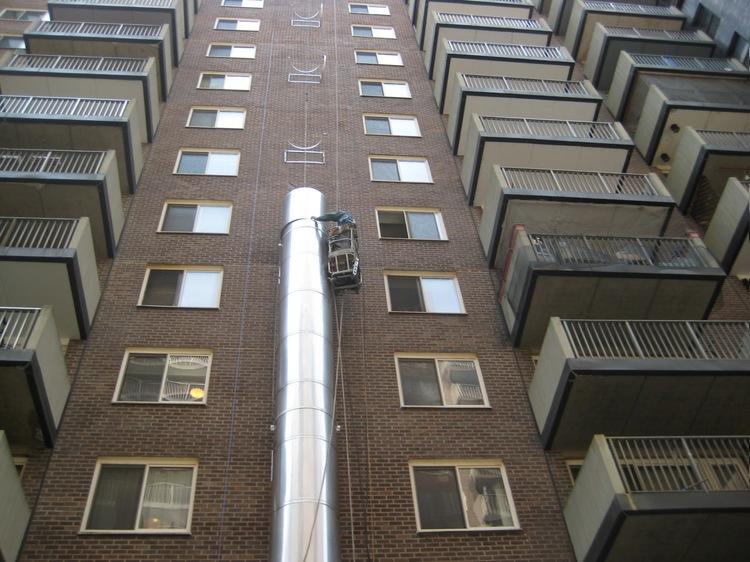
Steel pipes are equally successfully used in boiler houses of residential buildings and industrial facilities
The reason for this lies in the fact that thin stainless steel walls heat up very quickly, thus contributing to the above phenomena.
Heat-resistant stainless steel chimney pipe has the following advantages:
- resistance to condensate and corrosion;
- resistance to significant temperature differences;
- simplicity in installation;
- high strength;
- long term of operation.
Chimney pipes usually made of austenitic grade stainless steel. But often unscrupulous manufacturers use ferritic steel. In this embodiment, the smoke exhaust pipe will last no more than 2 years.
Advice! You can determine the product class using a magnet. The heat-resistant pipe made of stainless steel of the austenitic class will not be magnetized, and ferritic, on the contrary, will.
Another important factor is the wall thickness of the chimney made of stainless steel. If it is supposed to carry out installation of heating systems operating on gas and liquid fuel, the value of this parameter should be at least 6-8 millimeters. For systems that use solid fuel, the thickness of the metal pipe for the chimney is not less than 1 millimeter.
Similar products are conditionally divided into 2 categories:
- Single-wall chimney boiler pipes made of stainless steel.
- Pipes with thermal insulation "sandwich".
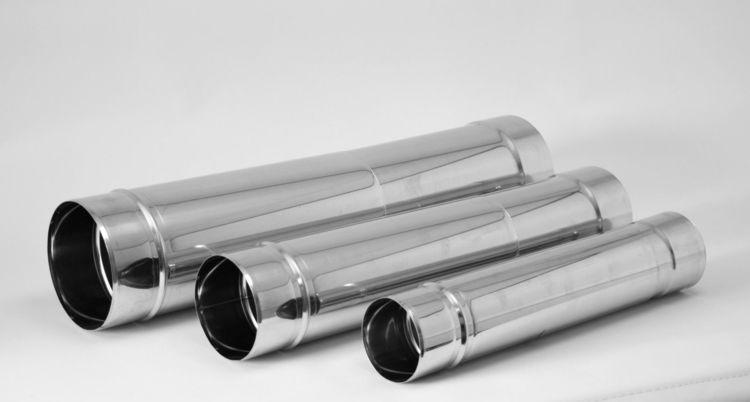
Depending on the type of heating equipment, a single-layer chimney or a pipe with insulation of the “sandwich” type is selected
Installation of chimney channels
The most common and simplest method of mounting single-wall products is the so-called “sleeve”, when the pipe is lowered into an existing brick chimney. After that, it connects to the pipe of the heating unit.The last procedure is carried out in order to prevent condensate generated from chimney gases from getting onto the brickwork. So that the draft in the chimney duct does not decrease, all joints of structural elements must be treated with heat-resistant sealant.
Installation of a chimney pipe with thermal insulation is considered more complicated. A sandwich product consists of two pipes, one of which is inserted into the other, and between them there is a layer of refractory material such as basalt. In the installation instructions you will find complete information about the sequence of steps in this process, however, you should pay attention to the following nuance. When docking such products, it is very important that the upper pipe is mounted on the lower pipe outside the “sandwich”, and the upper pipe must enter the lower pipe inside. The joints of the outer pipe of this design must be fixed with screws. If the sandwich is not installed correctly, spots and stains may appear on its outer pipe.
Some nuances of installing a stainless steel fireplace chimney
Chimneys made of stainless heat-resistant pipes are a worthy alternative to brick fireplace chimneys, since the final product is highly technological and easy to maintain.
In addition, there is a wide selection of pipe products in size. And on sale you can find a wide variety of ready-made elements for easy assembly, including details of the passage through the roof.
Before proceeding with the installation of the steel structure, the shaft should be properly prepared. To do this, first of all, it is necessary to install a fireplace insert. Its package should include special legs. If they are missing, make such supports yourself.
Helpful information! As a material for the manufacture of legs, fireclay bricks, metal can be used, the choice of stone is also allowed. The distance between the furnace and the wall should not be less than 15 cm (the thickness of the insulation layer is approximately 5 centimeters).
The furnace, which will be placed on a metal stand, professionals recommend covering with refractory paint, and the legs should be installed on pieces of brick. Having solved all these questions, it is necessary to find out with the help of a plumb line the location of the axis of the furnace smoke collector. It must completely coincide with the axis of the flue pipe. The chimney chimney is installed after the firebox is fixed using a special metal corner.
A few words about the shortcomings of a stainless pipe for organizing a chimney flue. First of all, it is high thermal conductivity, due to which condensate forms in large quantities. This property of stainless steel causes a high level of heat loss.
And remember, one of the main installation rules is as follows: when a steel chimney is installed, fire-resistant insulation is applied along the inner and outer contours of the chimney pipe.
